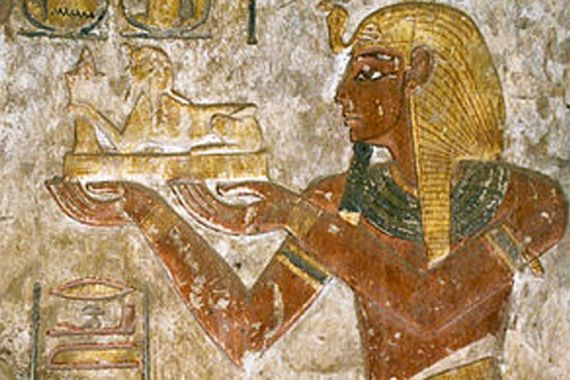Rameses III ‘assassinated’ in a royal coup
New evidence appears to confirm ancient tales of a conspiracy to assassinate Rameses III, “Egypt’s last great pharoah”.

Egypt was a nation of internal unrest and increasing economic difficulties when its “last great pharoah” was murdered, a study has concluded.
Beset by consitutional crises over succession, and battling a drought brought on by an unknown cause of climate change, Rameses III was assassinated in a royal coup some 3,000 years ago.
The death of the last New Kingdom ruler has remained unexplained through the swirling mists of time, but ancient tales of deceit, passion and power have now been proven true, according to an international team of mummy-studying Egypt experts.
“He was murdered (in a) harem conspiracy by cutting his throat,” researchers from the Institute for Mummies and the Iceman of the European Academy of Bolzano/Bozen concluded.
 |
| Thick layering covered the wound on Rameses’ mummy [AFP] |
Recent tests on Rameses’ mummified corpse have revealed “a wide and deep wound in the throat, probably caused by a sharp blade – and which could have caused immediate death”, said the researchers.
A Horus eye amulet was discovered inside the wound, hidden by a collar of thick linen layers – possibly to help the healing process in view of a mystical afterlife.
Forensic analysis published in the December issue of the British Medical Journal sheds light on the trimillennial murder mystery, a favourite conundrum of many Egyptologists.
Harem conspiracy
Rameses was around 65 years old, and revered by many as a god incarnate, when he met his end. Papyrus records from the time describe the trial of Tiye, one of Rameses’ two known wives. Queen Tiye reportedly wanted her son, Pentaweret, to succeed to power – and set in motion a complex conspiracy involving dozens of court officials to kill both Rameses and his preferred heir, Rameses IV, the son of another wife.
In early April 1167BC, according to scholars’ interpretation of “The Judicial Papyrus of Turin”, the pharoah was spending the evening in his royal harem – a residence for women hand-picked by the king. Conspirators used what was deemed “black magic” to overtake the king’s guards and kill the pharoah who had ruled over Egypt for 32 years.
Computed tomography (CT) imaging shows that Rameses’ windpipe and major arteries were slashed, inflicting a wound 70mm (2.75in) wide and reaching almost to the spine, the investigators said.
“I have almost no doubt about the fact that Ramses III was killed by this cut in his throat,” palaeopathologist Albert Zink of the EURAC Institute for Mummies and the Iceman in Italy told the AFP news agency.
“The cut is so very deep and quite large, it really goes down almost down to the bone – it must have been a lethal injury.
“We were very surprised and happy because we did not really expect to find something. Other people had inspected the mummy, at least from outside, and it was always described (as) ‘there are no signs of any trauma or any injuries.'”
While it remains possible that Rameses’ throat was cut after his death, it is highly unlikely – as such a practice was never recorded as an ancient Egyptian embalming technique.
The researchers, from Egypt, Italy and Germany, also examined the mummy of an unknown man between the ages of 18 and 20 found with Rameses III in the royal burial chamber.
They found DNA evidence that the corpse, known as the Screaming Mummy for its open mouth and contorted face, was related to Rameses – and may very well have been Prince Pentawere.
“What was special with him, he was embalmed in a very strange way,” said Zink.
“He had a very strange, reddish colour and a very strange smell. And he was also covered with a goat skin and this is something that was considered as impure in ancient Egyptian times” – possibly a post-mortem punishment for the crimes of his mother.
If it was Pentawere, it appears he may have been forced to hang himself, a punishment deemed at the time as sufficient to purge one’s sins for the afterlife, the researchers said.
Despite the harem conspiracy, Rameses III was suceeded by Rameses IV – as he had wished.